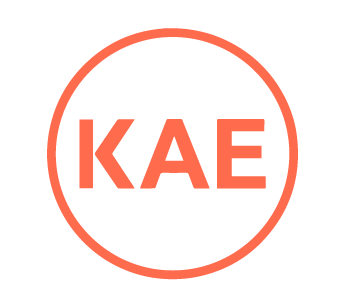Merchant Payments Ecosystem event 2024
Key takeaways
March, 2024
Author: Emily Beeby, Engagement Manager and the Payments Expert
The 17th annual Merchant Payments Ecosystem (MPE) conference brought together industry experts and leaders in Berlin to explore the latest trends and challenges in the payments landscape. As ever, conversations centred around the latest innovations and regulatory developments, but a clear theme emerged:
“Don’t start with technology. Start with the problem you’re trying to solve, and work backwards from there, to identify which solutions to use.”
Here are my reflections on the five key takeaways from the event, and the current state of play in the world of merchant payments.
1. Improving authorisation rates and decreasing checkout abandonment is essential in order to win in the e-commerce space. According to Netcetera and Giesecke+Devrient, consumers have to make an average of 19 clicks each time they check out online, and 70% of consumers abandon their checkouts because they are too complicated. Forter, a consumer authentication SaaS platform, also noted that 37% of shoppers will never buy again from a site after a falsely declined transaction. This is a huge missed revenue opportunity for merchants and speakers, sponsors and exhibitors highlighted a range of solutions to assist with this. For instance, Kenny Ebanyat from the National Basketball Association (NBA) explained their pain points when it comes to recurring transactions, where they had been met with frequent cases of suspected fraud and “do not honor” decline codes from issuers. In response, the NBA decided to use a merchant of record provider (Reach) to unlock local acquiring in each of the markets where they do business – in this scenario, Reach becomes the merchant of record for the transactions originating outside of the USA, rather than the NBA. According to the NBA, turning every transaction into a local one reduced false transaction declines, and increased authorisation rates by up to 40%.
Another way to streamline checkouts is through using either acquirer or network tokens. Click to Pay, the tokenised wallet provided by the international schemes, was being used or under consideration by 83% of the session’s audience. It uses network tokens to store cards (from all major international schemes) in one place, for a seamless checkout experience for the cardholder, to rival Apple and Google Pay. Additionally, according to Tokenx, acquirers can expect a 4% increase in approval rates when they move from acquirer tokens (generated by the acquirer or PSP and not based on an industry standard) to network tokens (generated by the schemes and based on EMVCo Payment Tokenisation specification).
For the largest merchants, payment orchestration can also be a good fit, creating an environment where acquirers compete to have the best authorisation rates, or even using AI to optimise conversion and checkout UX.
2. Fraud is still a massive challenge, and payments professionals need to fight fire with fire. Fraud is, unfortunately, still a hot topic for the industry, and with every forward step in the battle against fraudsters, the bad actors find new, more sophisticated opportunities to exploit the public. Mastercard’s Chris Reid elaborated on identity theft, and how all cases of stolen identity start with a stolen document. These stolen documents are then used to created fully KYC’d, transacting bank accounts, which are in turn sold on the dark web, for as much as €300. Demonstrating the scale of the problem, Reid acknowledged that every bank in the world has “fake” accounts like this on their books.
Not only this, but Galit Shani-Michel from Forter noted that fraudsters are using AI to bypass authorisation rules, to detect and automatically change IP addresses, shipping addresses, devices and other identifiers which have been flagged as fraudulent. The good news is that there are a number of ways that merchants and acquirers can use AI to fight back – for example, AI can be more accurate than 3DS or network tokens in detecting fraud, enabling acquirers and merchants to move away from rules-based systems towards more intelligent authorisations, ensuring bad actors are stopped but legitimate customers can pay. One live example of this is at UOB, which Arkwright Consulting noted is using AI to predict fraud in real time. The bank’s solution uses machine learning and predictive analytics to detect transactions which use illicit funds and produce early warning signals of potential scams.
Photo source: MPE, 2024
Photo source: MPE, 2024
3.AI should be revenue generating, as well as cost reducing. There are a range of ways payments professionals can utilise AI to reduce costs as well as generate revenue, beyond just fraud prevention. On one hand, acquirers can use AI in the back end to write code, to reduce chargebacks, or to route transactions to the cheapest processor. Payment providers can even use a large language model to answer customer queries, as CBA in Australia is doing; somewhat infamously, Klarna also recently claimed that its AI customer service assistant handles the workload of 700 people. On the other hand, though, there are a range of revenue-generating opportunities: acquirers can route transactions to the processor with the best authorisation rates, to determine and monitor which issuers do not provide PSD2 exemptions or support network tokens, to avoid unnecessary back and forth. At the front end, merchants can use AI to make personalised recommendations to customers, like an in-store salesperson might, as demonstrated by Rezolve.ai (a gen AI powered service desk provider); Asos and Zalando are both already doing this. Critically, though, several speakers noted that using AI is not a goal in itself – it is essential to define the problem to be solved first. It is also crucial not to lose sight of the potential impact on staff morale when implementing new automation tools in any business.
4. Alternative/local payment methods are increasingly important, and not just in emerging markets. In emerging markets with growing, digital-first middle classes, and credit card penetration as low as 20%, it’s clear that alternative payment methods are essential for success. However, with 45 highly successful local mobile payment solutions across Europe alone, there is a clear proliferation in payment methods in mature markets too – some of which, such as Blik in Poland, account for the majority of payments, so can no longer be considered ‘alternative’. As Martina Weimart from European Payments Initiative (EPI) pointed out, consumers don’t care about payment rails – so make sure that your customers can pay with their preferred payment method.
5. The industry needs greater cooperation and standardisation across the payments value chain. Events such as MPE go some way towards this goal, but several speakers highlighted areas where industry standardisation is lacking – for example, when it comes to tokenisation, some issuers seem to be better at managing card details than others. While the issuer has to provision the network token, they do not always do so, with some preferring PAN. Similarly, not all issuers provide Strong Customer Authentication exemptions. Other speakers highlighted how certain innovative products and solutions will struggle without widespread industry support – for example, Click to Pay needs issuer buy-in, and ideally a mandate from the schemes in order to cement its position as a global competitor to Apple and Google Pay. The domestic mobile wallet solutions operating across Europe also only stand a chance of competing with these international solutions if they band together to standardise their offering. Finally, when it comes to embedded finance, the solution is only as good as its weakest link – if one partner fails, then it risks the entire value chain.
It was an action-packed two and half days, with plenty of insightful conversations to be had and much to learn, and clearly there is no lack of innovation in this space, with over 90 sponsors and exhibitors showcasing their latest products. And, as Mastercard’s Chris Reid put it, “smart technology that’s not utilised is like a one-handed clap” – ultimately, payments professionals need to focus not on innovation for its own sake, but on solving the problems at hand.





